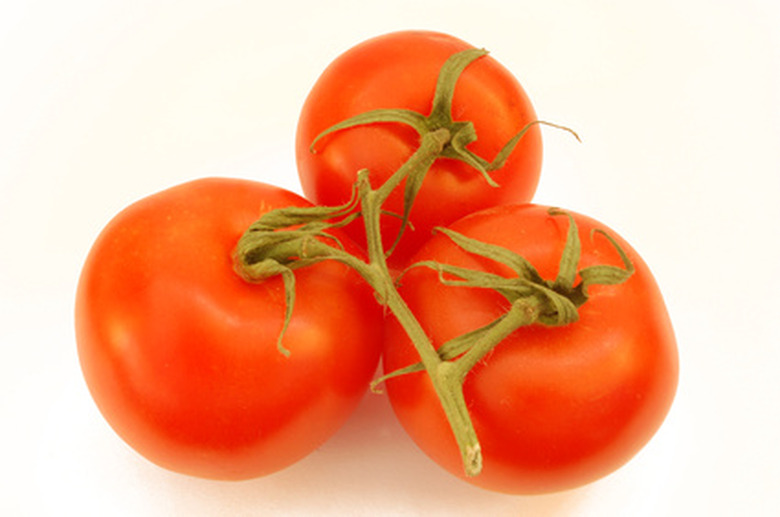Sevin Dust Uses For Tomato Plants
Sevin is the brand name of a series of carbaryl insecticide products manufactured by Bayer Cropscience. Sevin is available in different strengths for different applications; each of these applications is labeled for use on fruiting vegetables such as tomatoes. Sevin dust can be applied as a powder or mixed with water in a hose-end or pump garden sprayer for easy use on home tomato crops.
Cloudy Spot Control
Muddy yellow-looking spots on tomato fruit are caused by punctures which stink bugs make when feeding, according to the Illinois Extension Integrated Pest Management program. Illinois Extension recommends home gardeners use a solution of 2 tbsp. of 50-percent carbaryl Sevin powder to a gallon of water–but don't spray it on the tomato plants themselves. Rather, spray it on nearby weedy areas where the stink bugs ravaging your tomato plants live. Keeping nearby areas mowed will also reduce the stinkbug population. Illinois Extension advises that when the tomato plants are small, home gardeners can treat the tomato growing area with 1 lb. of Sevin dust per acre, sprinkled on the plant foliage, to discourage stink bug development; allow at least seven days to tomato harvest after application, and wash the fruit thoroughly before eating or processing. The Sevin manufacturer's label advises that thorough coverage is necessary for success at suppressing stink bugs.
- Sevin is the brand name of a series of carbaryl insecticide products manufactured by Bayer Cropscience.
- Sevin dust can be applied as a powder or mixed with water in a hose-end or pump garden sprayer for easy use on home tomato crops.
Tomato Fruitworm and Hornworm
Tomato fruitworm and hornworms are two of the most destructive tomato crop pests, boring into the fruit and rendering it unusable. The University of Arkansas Cooperative Extension recommends controlling these two tomato worms by regular applications of insecticide dust such as Sevin, coating the foliage of the plant, every seven days beginning as soon as the green fruit begin to appear. The Arkansas Extension recommends discontinuing Sevin use if mites appear, however, suggesting that Sevin use can increase mite problems. Water crops thoroughly as mites favor dry weather; once the mite infestation is under control, continue Sevin use for other pests.
Colorado Potato Beetles
The University of Arkansas Extension recommends applying Sevin to tomato plants as needed when Colorado potato beetles are spotted on the leaves. Home gardeners can simply sprinkle Sevin dust on the affected tomato plant leaves after hand-picking off any visible Colorado potato beetles.
